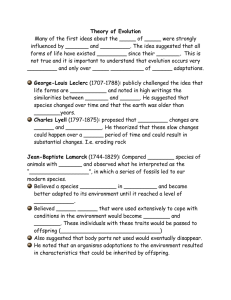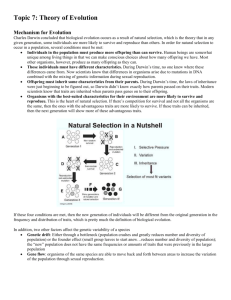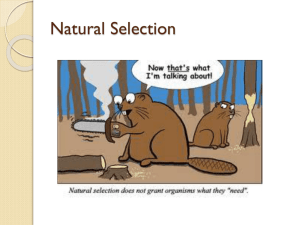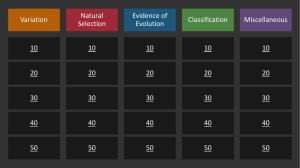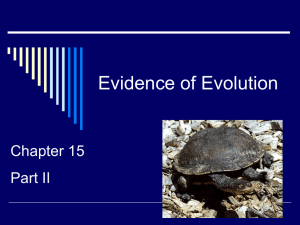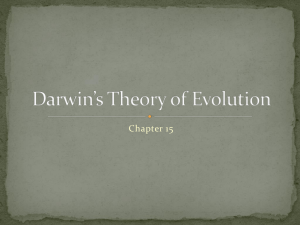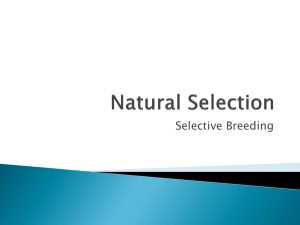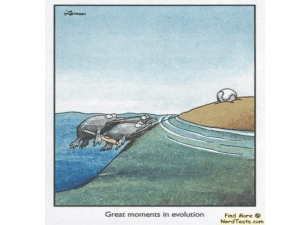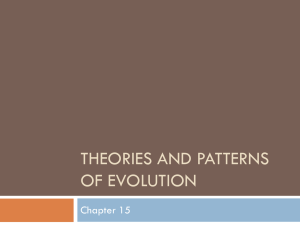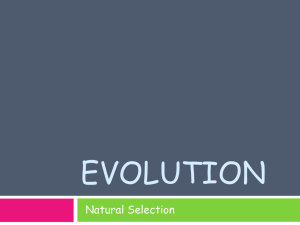Evolution Review Sheet: Darwin, Natural Selection, & More
advertisement
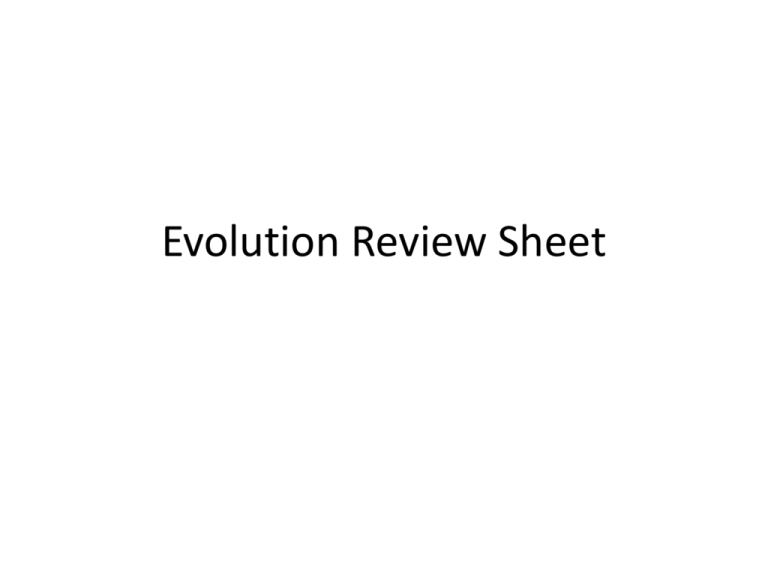
Evolution Review Sheet 1. Explain Darwin’s 2 ideas • Descent with Modification – over generations populations change and all of life came from a common ancestor • Modification by Natural Selection – populations change when organisms, having good traits for an environment, survive and pass on their genes 2. List 4 steps of his theory • Populations overproduce offspring • Variation exists among those offspring • Having a particular trait makes individuals more or less likely to survive in an environment • Over time, those traits become adaptations 3. Explain Lamarck’s ideas • Lamarck hypothesized that acquired traits could be passed to offspring – Acquired traits = traits obtained in your lifetime a. Was found to NOT be correct; behavior can’t determine the traits that are passed to offspring 4. What other information contributed to Darwin’s ideas • Hutton = Earth is shaped by geologic forces that occurred over millions of years • Malthus = human overpopulation • Lyell explains that geologic processes observed today have always been occurring • Wallace discusses the idea of evolution by natural selection 5. What is an adaption? • Inherited trait that is present in a population because the trait helps individuals survive and reproduce in an environment 6. What is natural selection? • Process by which individuals that are better adapted to their environment survive and reproduce more successfully than less well adapted individuals 7. True or False: Individuals can evolve. • False 8. What is a fossil? • Fossil = remains of organisms that lived in the past a. Can compare living things to fossils to see patterns about how organisms are related and how they have gradually changed over time b. Whales were thought to be land animals because a hip bone and hind leg bones found in some species of whales and comparing fossil evidence a. This indicates they might have once been land dwelling 9. What is biogeography? • Biogeography = study of the locations of organisms around the world a. Found organisms with similar traits in similar habitats or biomes 10. What is embryology? • Embryology = study of the development of organisms a. Can compare the development of species to look for similarities and to determine relationships between species 11. What are homologous structures? • Homologous structures – characteristics which are shared by related species because they have been inherited in some way from a common ancestor a. Vestigial organs/structures – organs that had a function in the past but serves no function in the current organism b. Internal similarities between organisms suggests they may share a common ancestor 12. 2 Molecules scientists study? • Molecules = DNA and amino acid sequences a. Closely related b. Not closely related 13. Strengths and Weakness? • Strengths – Many types of evidence – Logical and testable mechanism for how evolution occurs: natural selection – Variation in individuals is important • Weaknesses – Darwin didn’t know very much about genetics
